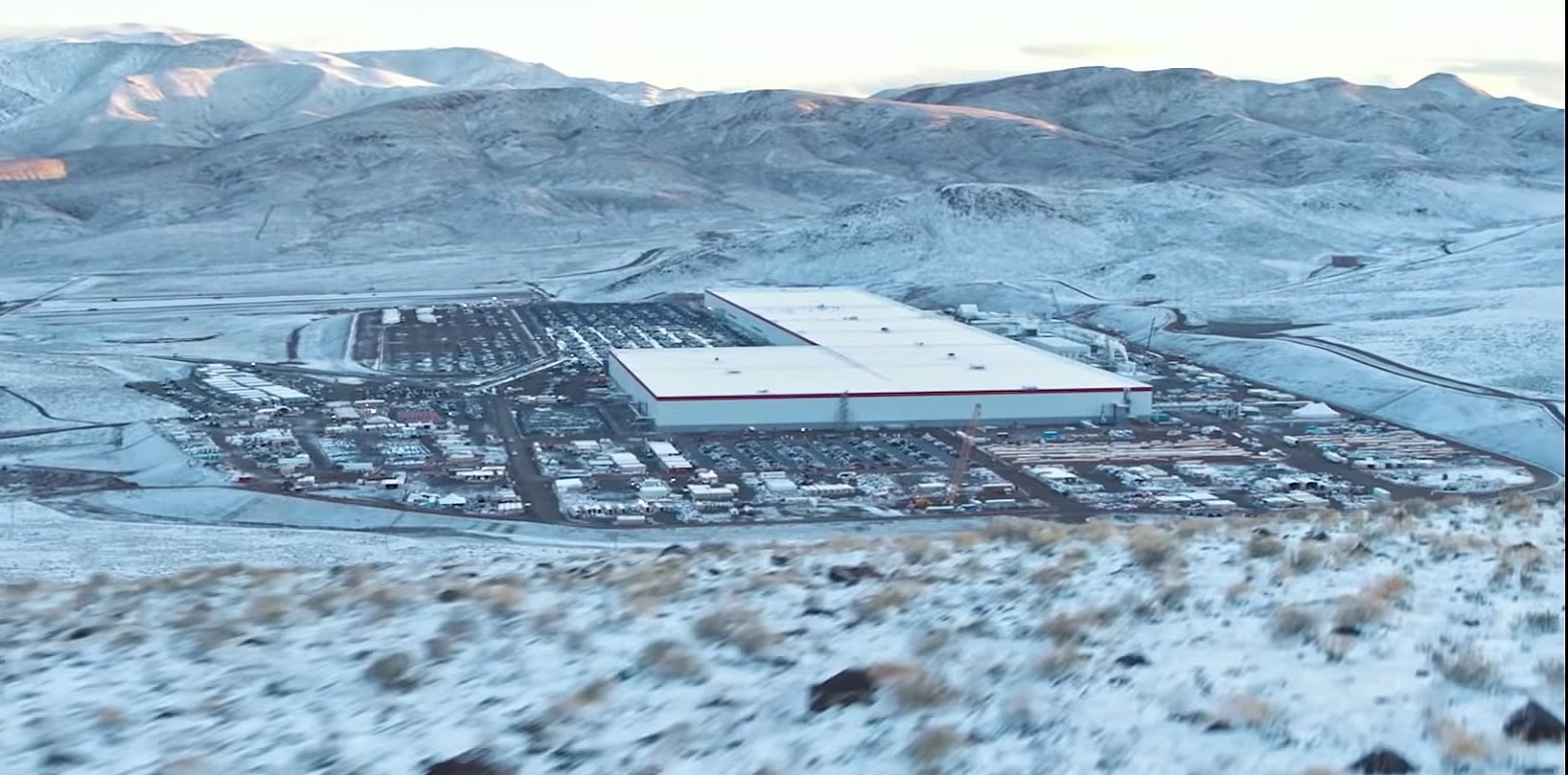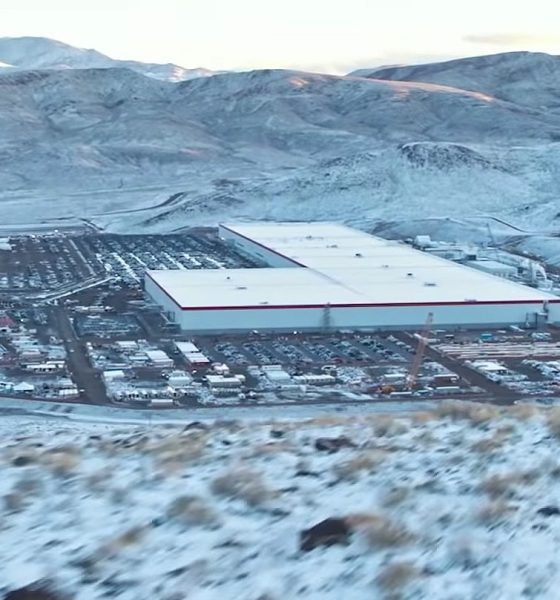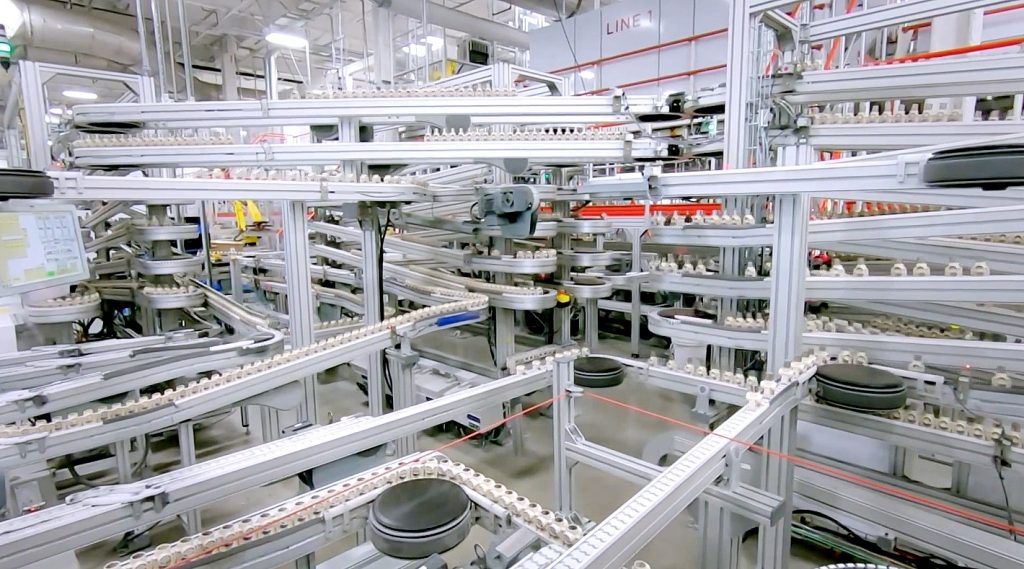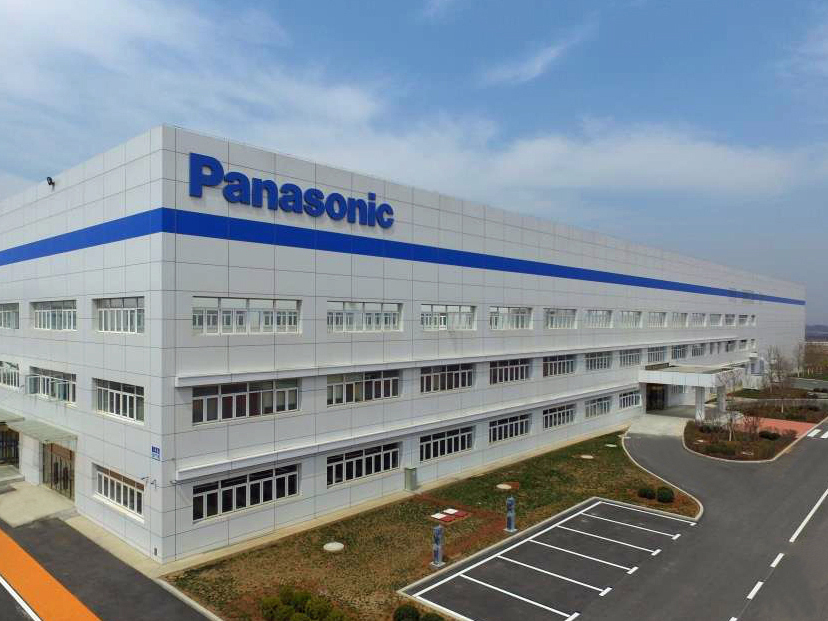

News
Panasonic finds itself in need of some Tesla-style boldness as it enters its next era
Tesla’s oldest battery partner, Panasonic, is finding itself at a crossroads once more. With Chief Executive Kazuhiro Tsuga poised to step down next June, the massive Japanese conglomerate is feeling some pressure to optimize and streamline itself. To accomplish this, Panasonic may need to channel one of its key battery partners, Tesla, and its CEO, Elon Musk, to make the bold decisions needed to thrive in a new era.
When Tsuga took Panasonic’s reins eight years ago, he stated that his first priority would be to return the massive conglomerate into a profitable “normal company.” He did not disappoint. Tsuga stemmed a record loss by pulling the company out of the plasma television market and repositioning the firm as an automotive-and-housing conglomerate. The veteran Japanese executive also did something unexpected: he initiated a $5 billion battery manufacturing tie-up with Tesla in 2014.
Tsuga’s strategy of partnering with Tesla, then an unproven electric car maker, and a CEO known for a Tony Stark-like persona, was considered a courageous move on the Japanese conglomerate’s part. The partnership of the experienced Japanese veteran and assertive US startup bore fruit, with Gigafactory Nevada becoming the world’s largest battery facility. Its operations with Tesla are even closing in on its first annual profit. But the journey to this point was not easy.

As noted in a Financial Times report, Panasonic and Tesla clashed over the years, and these tensions reportedly manifested themselves when the Japanese firm decided to not invest in Gigafactory Shanghai. This resulted in Tesla partnering with other suppliers like LG Chem and Contemporary Amperex Technology Co., Limited (CATL). Tesla has also announced plans to start producing its own 4680 tabless cells for its vehicles and energy storage products.
As the outgoing Panasonic CEO prepares to step down in June, his promise of running a “normal company” is leaving a bitter aftertaste to the company he will leave behind. Over the years, rivals such as Sony and Hitachi have gone on massive divestment initiatives to streamline their businesses. And while Panasonic has followed a similar path, executives continue to struggle to define what kind of company it is. Newly-appointed chief executive Yuki Kusumi, who is poised to succeed Tsuga, referenced this when he stated that Panasonic could achieve growth if it could optimize businesses that excelled in its portfolio, which currently stretches across a whopping 520 subsidiaries.

The outgoing Panasonic CEO, as a final departing measure, is hoping to change the company into a holding company structure, which is similar to a move that rival Sony will make around April. According to Panasonic, the shift, which is expected to be completed in 2022, could help accelerate decision-making across the conglomerate by running its units independently. Yet even this strategy poses challenges for Panasonic since unlike Sony, which has found its “core” in the games, films, animation, and the music segment, Panasonic’s “core” still seems unclear. This difference is evident when one looks at the two Japanese firms’ performance in the market. Sony has increased 78% since February while Panasonic has dropped 30%.
But things may be looking up for Panasonic. When he announced Panasonic’s shift to a holding company, Tsuga resurrected car batteries as a “core” by branding it as an “energy business.” Thanks in part to this, as well as the ongoing expansion of profitable projects like Gigafactory Nevada, Panasonic’s next CEO, Yuki Kusumi, would be taking control of a company that is in a much better financial position as the one handed over to his predecessor. As highlighted by the Financial Times, if Kusumi would like to usher in a revival or a breakthrough of sorts for Panasonic in the coming years, he would have to channel less of his predecessor’s “normal company” strategy and more of the boldness characteristic of partners like Tesla.
Markets like the battery industry are only just heating up, after all. While Tesla has stated that it intends to keep and grow its partnership with suppliers like Panasonic despite its own battery production plans, competitors like LG Chem and CATL are not sitting out the next few years. LG has even posted a bold challenge of sorts to the Japanese conglomerate recently, with the South Korean firm stating that it has every intention to become Tesla’s main battery supplier in the near future, effectively taking Panasonic’s place. With some Elon Musk-style boldness, however, perhaps Panasonic could still keep its lead in the battery sector, and perhaps even increase its reach in the growing EV segment.

Elon Musk
Elon Musk and Tesla AI Director share insights after empty driver seat Robotaxi rides
The executives’ unoccupied tests hint at the rapid progress of Tesla’s unsupervised Robotaxi efforts.

Tesla CEO Elon Musk and AI Director Ashok Elluswamy celebrated Christmas Eve by sharing personal experiences with Robotaxi vehicles that had no safety monitor or occupant in the driver’s seat. Musk described the system’s “perfect driving” around Austin, while Elluswamy posted video from the back seat, calling it “an amazing experience.”
The executives’ unoccupied tests hint at the rapid progress of Tesla’s unsupervised Robotaxi efforts.
Elon and Ashok’s firsthand Robotaxi insights
Prior to Musk and the Tesla AI Director’s posts, sightings of unmanned Teslas navigating public roads were widely shared on social media. One such vehicle was spotted in Austin, Texas, which Elon Musk acknowleged by stating that “Testing is underway with no occupants in the car.”
Based on his Christmas Eve post, Musk seemed to have tested an unmanned Tesla himself. “A Tesla with no safety monitor in the car and me sitting in the passenger seat took me all around Austin on Sunday with perfect driving,” Musk wrote in his post.
Elluswamy responded with a 2-minute video showing himself in the rear of an unmanned Tesla. The video featured the vehicle’s empty front seats, as well as its smooth handling through real-world traffic. He captioned his video with the words, “It’s an amazing experience!”
Towards Unsupervised operations
During an xAI Hackathon earlier this month, Elon Musk mentioned that Tesla owed be removing Safety Monitors from its Robotaxis in Austin in just three weeks. “Unsupervised is pretty much solved at this point. So there will be Tesla Robotaxis operating in Austin with no one in them. Not even anyone in the passenger seat in about three weeks,” he said. Musk echoed similar estimates at the 2025 Annual Shareholder Meeting and the Q3 2025 earnings call.
Considering the insights that were posted Musk and Elluswamy, it does appear that Tesla is working hard towards operating its Robotaxis with no safety monitors. This is quite impressive considering that the service was launched just earlier this year.
Elon Musk
Starlink passes 9 million active customers just weeks after hitting 8 million
The milestone highlights the accelerating growth of Starlink, which has now been adding over 20,000 new users per day.

SpaceX’s Starlink satellite internet service has continued its rapid global expansion, surpassing 9 million active customers just weeks after crossing the 8 million mark.
The milestone highlights the accelerating growth of Starlink, which has now been adding over 20,000 new users per day.
9 million customers
In a post on X, SpaceX stated that Starlink now serves over 9 million active users across 155 countries, territories, and markets. The company reached 8 million customers in early November, meaning it added roughly 1 million subscribers in under seven weeks, or about 21,275 new users on average per day.
“Starlink is connecting more than 9M active customers with high-speed internet across 155 countries, territories, and many other markets,” Starlink wrote in a post on its official X account. SpaceX President Gwynne Shotwell also celebrated the milestone on X. “A huge thank you to all of our customers and congrats to the Starlink team for such an incredible product,” she wrote.
That growth rate reflects both rising demand for broadband in underserved regions and Starlink’s expanding satellite constellation, which now includes more than 9,000 low-Earth-orbit satellites designed to deliver high-speed, low-latency internet worldwide.
Starlink’s momentum
Starlink’s momentum has been building up. SpaceX reported 4.6 million Starlink customers in December 2024, followed by 7 million by August 2025, and 8 million customers in November. Independent data also suggests Starlink usage is rising sharply, with Cloudflare reporting that global web traffic from Starlink users more than doubled in 2025, as noted in an Insider report.
Starlink’s momentum is increasingly tied to SpaceX’s broader financial outlook. Elon Musk has said the satellite network is “by far” the company’s largest revenue driver, and reports suggest SpaceX may be positioning itself for an initial public offering as soon as next year, with valuations estimated as high as $1.5 trillion. Musk has also suggested in the past that Starlink could have its own IPO in the future.
News
NVIDIA Director of Robotics: Tesla FSD v14 is the first AI to pass the “Physical Turing Test”
After testing FSD v14, Fan stated that his experience with FSD felt magical at first, but it soon started to feel like a routine.

NVIDIA Director of Robotics Jim Fan has praised Tesla’s Full Self-Driving (Supervised) v14 as the first AI to pass what he described as a “Physical Turing Test.”
After testing FSD v14, Fan stated that his experience with FSD felt magical at first, but it soon started to feel like a routine. And just like smartphones today, removing it now would “actively hurt.”
Jim Fan’s hands-on FSD v14 impressions
Fan, a leading researcher in embodied AI who is currently solving Physical AI at NVIDIA and spearheading the company’s Project GR00T initiative, noted that he actually was late to the Tesla game. He was, however, one of the first to try out FSD v14.
“I was very late to own a Tesla but among the earliest to try out FSD v14. It’s perhaps the first time I experience an AI that passes the Physical Turing Test: after a long day at work, you press a button, lay back, and couldn’t tell if a neural net or a human drove you home,” Fan wrote in a post on X.
Fan added: “Despite knowing exactly how robot learning works, I still find it magical watching the steering wheel turn by itself. First it feels surreal, next it becomes routine. Then, like the smartphone, taking it away actively hurts. This is how humanity gets rewired and glued to god-like technologies.”
The Physical Turing Test
The original Turing Test was conceived by Alan Turing in 1950, and it was aimed at determining if a machine could exhibit behavior that is equivalent to or indistinguishable from a human. By focusing on text-based conversations, the original Turing Test set a high bar for natural language processing and machine learning.
This test has been passed by today’s large language models. However, the capability to converse in a humanlike manner is a completely different challenge from performing real-world problem-solving or physical interactions. Thus, Fan introduced the Physical Turing Test, which challenges AI systems to demonstrate intelligence through physical actions.
Based on Fan’s comments, Tesla has demonstrated these intelligent physical actions with FSD v14. Elon Musk agreed with the NVIDIA executive, stating in a post on X that with FSD v14, “you can sense the sentience maturing.” Musk also praised Tesla AI, calling it the best “real-world AI” today.








